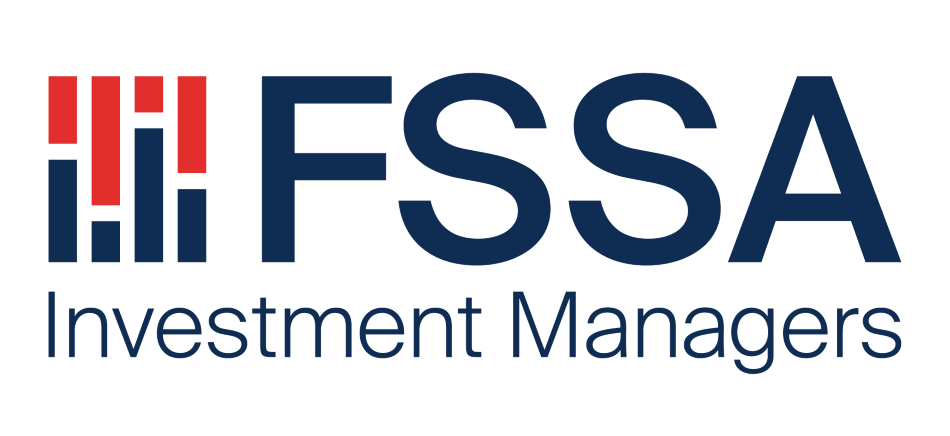
Remaining optimistic on emerging markets
Is it time to abandon emerging markets?
The year 2023 turned out to be fairly pedestrian in terms of emerging markets’ performance. The asset class was weighed down by China, which recorded its third consecutive year of negative returns. 2023 was also a year in which emerging markets, in aggregate, underperformed developed markets yet again (US markets in particular) – the sixth time this has happened in the past 10 years.1 While we are not normally fazed by short-term relative performance (which in many cases tend to be driven by noise rather than fundamentals), the magnitude of the performance differentials over the past decade naturally deserves some reflection and begs the question whether something structural has changed?
While the asset class is clearly facing a number of issues from a headline perspective (a slowing Chinese economy, increased geopolitical risk, and policy paralysis in major markets such as Turkey, South Africa and Peru, to name just a few), we believe that some perspective is needed. Fundamentally, we would argue that it is hard to be optimistic on global markets while at the same time staying pessimistic on emerging markets. The global economy is increasingly being led by emerging markets – a trend we believe will continue to accelerate in the coming years.
While emerging markets have for many years accounted for the majority of the world's population, they now also account for the majority of the global economy. Yet the significance of emerging markets from a global economic and growth perspective is not well reflected in capital markets. Over the past decade, emerging markets’ share of world Gross Domestic Product (GDP) has risen from 56% to 59%,2 yet its share of global equity markets has fallen from 12% to 11%.3
Meanwhile, the “Buffett Indicator”, which measures a country’s stock market capitalisation relative to its GDP, looks fairly depressed in most emerging markets (with the exception of perhaps India), a sharp contrast to developed markets (notably the US and Japan). While US capitalism in particular has been exceedingly beneficial for stock market returns over the past decade, with the US now accounting for 44% of the global stock market despite making up just 15% of global GDP,4 there are, in our view, natural limitations to how far these measures can diverge.
More importantly, if we look beyond the headline perspectives, the best long-term opportunities in emerging markets have never been well reflected in the index. The outsized dominance of state-owned enterprises (SOEs) has meant that a large part of the index has consistently destroyed value for investors over the years. Yet, ignoring emerging markets altogether would, in our opinion, be a mistake. With more than 3,000 listed entities with a market capitalisation of more than one billion US dollars, emerging markets can provide a fertile hunting ground for long-term investors.
As a reminder, we specifically focus on quality companies that have defensive characteristics, such as high returns and recurring cash flows. Often, they can be found among the dominant consumer, financial or service companies in the less developed parts of the world. Not only are penetration rates low for many goods and services, providing a favourable long-term demand backdrop, but a high level of informality in many of these countries raises the barriers to entry substantially. This often facilitates a benign competitive environment that allows many of the dominant companies (with a brand, distribution or scale advantage) to generate high margins and high returns, and as a result, strong free cash flow. On top of that, our holdings tend to have business models that are cash-based (typically, they receive cash upfront but pay their suppliers with a lag), giving them a working capital advantage which can be used as a source of funding, amplifying their returns.
Historically, this focus has led to substantial operational outperformance by our portfolio holdings compared to the broader markets. Over the past five years, the aggregate revenue growth of companies in the FSSA Global Emerging Markets Focus portfolio has compounded annually by 14%, compared to 7% for the MSCI Emerging Market Index (both in USD terms). Given the higher margins and asset-light nature of our holdings, this has translated into an operating profit growth of 16% CAGR5 (in USD terms), which is substantially higher than the index's 9% CAGR (likely due to the low margins and capital intensity of several major index constituents).
While it's fair to question whether historical operational performance is a good indicator of future performance, the resilience of the demand outlook for our holdings is another feature that we believe sets them apart from the broader markets. The United Nations expects that between 2020 and 2040, the working-age population in developing regions will grow by about 800 million people.6 In addition, cities in less developed regions will expand by 1.5 billion people,7 which alone is more than the total population of today's developed-market cities. These secular drivers (demographics, urbanisation, more women entering the labour force, etc.) will continue to create large, growing profit pools that our holdings can tap into, particularly those that specialise in providing basic goods and services in these markets.
For example, the current household debt in India is 15% of GDP,8 with the majority of the system still controlled by the big inefficient SOE banks which are losing market share every year to the more nimble private-sector banks. This supports the long-term investment case for our two Indian private-sector financials, ICICI Bank and HDFC Bank. In China, the premium part of the local beer market is currently less than 10%, which compares to 30-40% in most developed markets. This provides a strong demand backdrop for our Chinese brewery holdings, Tsingtao and the Heineken affiliate China Resources Beer - two of the dominant companies in that category. Similarly, in South Africa, despite the troubling macroeconomic environment over the last 15 years, our holding Capitec has been able to compound its book value per share by 18% in USD, taking market share from the big four banks that still control more than 75% of the market. And in Mexico, despite being the largest quick service restaurant operator in the country, with 2,500 stores and a market share of roughly 15% of the formalised market, Alsea continues to have ample growth opportunities, as the formal restaurant market still only makes up 30% of the entire restaurant industry (which is much lower than in many other markets globally).
The central investment case for all of these companies is that they benefit from the secular growth trends in emerging markets. But more importantly, they have established strong competitive advantages (in the form of brands, switching costs, networks, scale, etc.) that allow them to generate high margins and high returns while competing in a rational and benign competitive environment. It is the continued strength and dominance of these business models that we believe are the strategic reasons to invest in emerging markets over the long term.
Are emerging markets left behind in the new economy?
The final point we would like to make is that we believe emerging market companies will increasingly dominate the “new economy” in the coming decades. While China's strict oversight of social media is not advantageous in the current global AI9 race, the leading Chinese internet companies arguably have some of the best datasets in the world to train their large language models on. Tencent, Alibaba and Douyin (TikTok) are all significantly invested in this regard, but it remains to be seen how they plan to use this commercially.
Even outside of AI, we believe the prospects for emerging markets remain overwhelmingly positive. We have for many years seen emerging market companies dominating critical sectors such as semiconductor manufacturing (Taiwan Semiconductor Manufacturing, or TSMC), and more recently in green energy sectors such as solar panels (Longi), batteries (Contemporary Amperex Technology (CATL) and LG Group) and electric vehicles (China is now the world’s largest auto exporter, led by BYD). Given the strong ecosystem across many industries in emerging markets, we think there will be a similar dynamic within robotics and clean energy. In a further example, we had a recent meeting with the senior management of a leading New Zealand-based medical device company. Their view was that Chinese companies might soon become global leaders in medical devices, given the scale advantages and increasingly sophisticated research and development (R&D) capabilities. That company had recently set up an R&D centre in Guangzhou, China, citing the local talent hub and strong ecosystems that cannot be found anywhere else in the world.
This is not to say that there are no issues in emerging markets – there are plenty of challenges to address, which we outlined at the beginning of this letter. But, in conclusion, and to answer our initial question of whether anything has structurally changed: we believe the strategic investment case continues to look attractive for our holdings and, going in to 2024, we remain optimistic. Given the indiscriminate selling we have witnessed across the board in several emerging markets – most notably China – valuations seem attractive for our holdings. By our estimates, we expect most of our portfolio holdings should be able to grow their free cash flow by low to mid-teens in 2024, which we believe is attractive. However, whether these encouraging bottom-up fundamentals will be reflected in share price performance in 2024, or at a later stage, is anyone’s guess.
Source: Company data retrieved from company annual reports or other such investor reports. Financial metrics and valuations are from FactSet and Bloomberg. As at 12 January 2024 or otherwise noted.
Footnotes
1 Source: Factset, MSCI. Based on calendar year performance.
2 Source: International Monetary Fund, World Economic Outlook database, October 2023. GDP based on PPP, share of world (Percent of World), 2014 and 2023 figures. https://www.imf.org/en/Publications/WEO/weo-database/2023/October
3 Source: SIFMA Research, July 2023. 2023 Capital Markets Fact Book, 2013 and 2022 figures. https://www.sifma.org/resources/research/fact-book/
4 Source: World Federation of Exchanges, stock market capitalisation as at November 2023. https://focus.world-exchanges.org/issue/january-2024/market-statistics; International Monetary Fund, World Economic Outlook database, October 2023. GDP, current prices, based on PPP. 2023 figure. https://www.imf.org/en/Publications/WEO/weo-database/2023/October
5 Compound annual growth rate
6 Source: United Nations, Department of Economic and Social Affairs, Population Division (2024). Data Portal, custom data acquired via website. Population by age and sex - broad age groups (15-64), 2023 and 2040 projections. United Nations: New York. https://population.un.org/DataPortal/
7 Source: United Nations Human Settlements Programme (UN-Habitat), 2022. World Cities Report 2022: Envisaging the Future of Cities, p9, Table 1.2: Urban population and level of urbanization (2015–2050). United Nations: Nairobi, Kenya. https://unhabitat.org/wcr/
8 Source: CEIC Data. https://www.ceicdata.com/en/indicator/india/household-debt--of-nominal-gdp
9 Artificial Intelligence
Risk factors
Capital at risk. The value of investments and any income from them may go down as well as up and are not guaranteed. Investors may get back significantly less than the original amount invested.
Important Information
This document has been prepared for informational purposes only and is only intended to provide a summary of the subject matter covered and does not purport to be comprehensive. The views expressed are the views of the writer at the time of issue and may change over time. It does not constitute investment advice and/or a recommendation and should not be used as the basis of any investment decision.
This document is not an offer document and does not constitute an offer or invitation or investment recommendation to distribute or purchase securities, shares, units or other interests or to enter into an investment agreement. No person should rely on the content and/or act on the basis of any material contained in this document.
Net Asset Value (NAV) performance is not the same as share price performance and shareholders may realise returns that are lower or higher than NAV performance.
This document is confidential and must not be copied, reproduced, circulated or transmitted, in whole or in part, and in any form or by any means without our prior written consent. The information contained within this document has been obtained from sources that we believe to be reliable and accurate at the time of issue but no representation or warranty, express or implied, is made as to the fairness, accuracy, or completeness of the information. We do not accept any liability whatsoever for any loss arising directly or indirectly from any use of this information.
References to "we" or "us" are references to First Sentier Group. In the UK, issued by First Sentier Investors (UK) Funds Limited which is authorised and regulated by the Financial Conduct Authority (registration number 143359). Registered office Finsbury Circus House, 15 Finsbury Circus, London, EC2M 7EB number 2294743.
Scottish Oriental Smaller Companies Trust plc ("Company") is an investment trust, incorporated in Scotland with registered number SC0156108, whose shares have been admitted to the Official List of the London Stock Exchange plc. The Company is an alternative investment fund and has appointed First Sentier Investors (UK) Funds Limited as the alternative investment fund manager for the Company. Further information is available from Client Services, First Sentier Group, Finsbury Circus House, 15 Finsbury Circus, London, EC2M 7EB or by telephoning 0800 587 4141 between 9am and 5pm Monday to Friday or by visiting www.scottishoriental.com. Telephone calls with First Sentier Group may be recorded.
First Sentier Group entities referred to in this document are part of First Sentier Group, a member of MUFG, a global financial group. First Sentier Group includes a number of entities in different jurisdictions. MUFG and its subsidiaries do not guarantee the performance of any investment or entity referred to in this document or the repayment of capital. Any investments referred to are not deposits or other liabilities of MUFG or its subsidiaries, and are subject to investment risk including loss of income and capital invested.
© First Sentier Group


